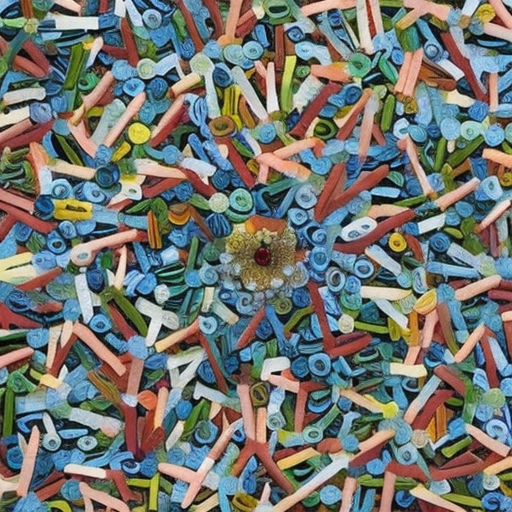Dadaism:
Dadaism was an avant-garde art movement that emerged during World War I in Zurich, Switzerland. It rejected traditional artistic conventions and sought to challenge the established norms of society. Dadaists used unconventional materials and techniques to create artworks that were often nonsensical and absurd. The movement had a profound influence on the development of modern art and paved the way for later movements such as Surrealism.
Origins and Influences:
Dadaism originated in 1916 at the Cabaret Voltaire, a nightclub in Zurich. It was a response to the horrors of World War I and the prevailing cultural and political climate of the time. The movement was influenced by various artistic and intellectual movements, including Cubism, Futurism, and Expressionism. Dadaists were also influenced by the writings of philosophers such as Friedrich Nietzsche and Sigmund Freud, who questioned the nature of reality and the role of the unconscious mind.
Principles and Manifestos:
Dadaism was characterized by its rejection of traditional artistic values and its embrace of chaos and irrationality. Dadaists believed that art should be a means of provoking and challenging the audience, rather than providing aesthetic pleasure. They sought to disrupt the established order and expose the absurdity of society. Dadaists often used humor, satire, and irony to convey their message.
The movement was marked by the creation of numerous manifestos, which outlined the principles and goals of Dadaism. These manifestos were often written in a nonsensical and fragmented style, reflecting the movement’s rejection of logical and coherent thinking. The most famous manifesto was the “Dada Manifesto” written by Tristan Tzara in 1918. It called for the destruction of traditional art and the creation of a new artistic language.
Artworks and Techniques:
Dadaists employed a wide range of artistic techniques and mediums. They created collages, assemblages, readymades, and performances that challenged conventional notions of art. Collages were made by combining different materials and objects, often sourced from everyday life, to create new and unexpected meanings. Assemblages involved the construction of three-dimensional artworks using found objects and discarded materials. Readymades were ordinary objects that were selected and presented as artworks, challenging the idea of artistic skill and craftsmanship.
Dadaists also embraced performance art as a means of expressing their ideas. They staged provocative and chaotic performances that often involved audience participation. These performances were intended to shock and disrupt the audience’s expectations.
Legacy and Influence:
Dadaism had a profound impact on the development of modern art. Its rejection of traditional artistic values and embrace of unconventional materials and techniques paved the way for later movements such as Surrealism, Abstract Expressionism, and Pop Art. Dadaism also influenced other art forms, including literature, music, and film. The movement’s emphasis on the power of the individual artist and the importance of personal expression continues to resonate with contemporary artists.
In conclusion, Dadaism was an avant-garde art movement that emerged during World War I. It rejected traditional artistic conventions and sought to challenge the established norms of society. Dadaists used unconventional materials and techniques to create artworks that were often nonsensical and absurd. The movement had a profound influence on the development of modern art and paved the way for later movements such as Surrealism. Dadaism continues to be celebrated for its radical approach to art-making and its enduring legacy in the art world.












